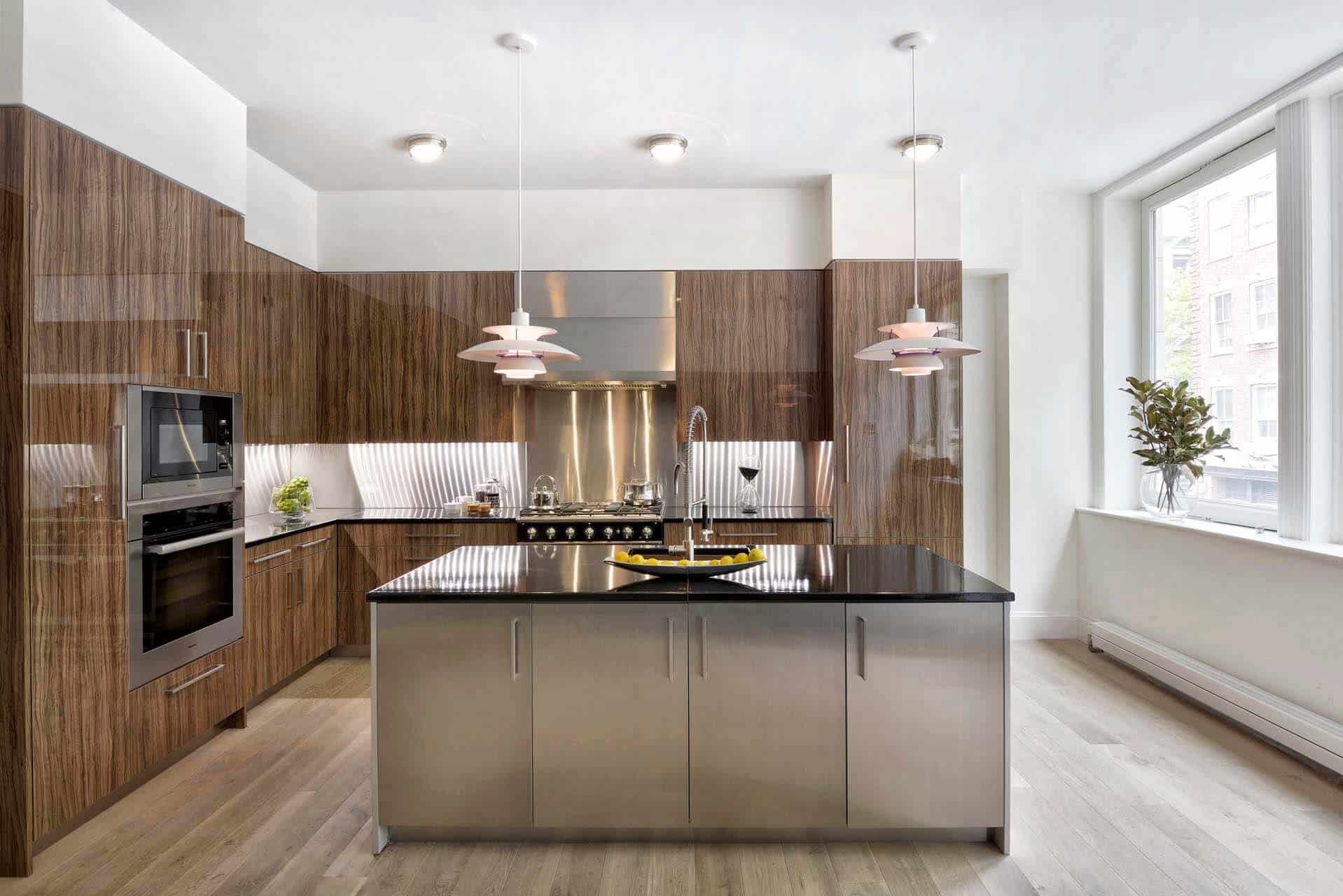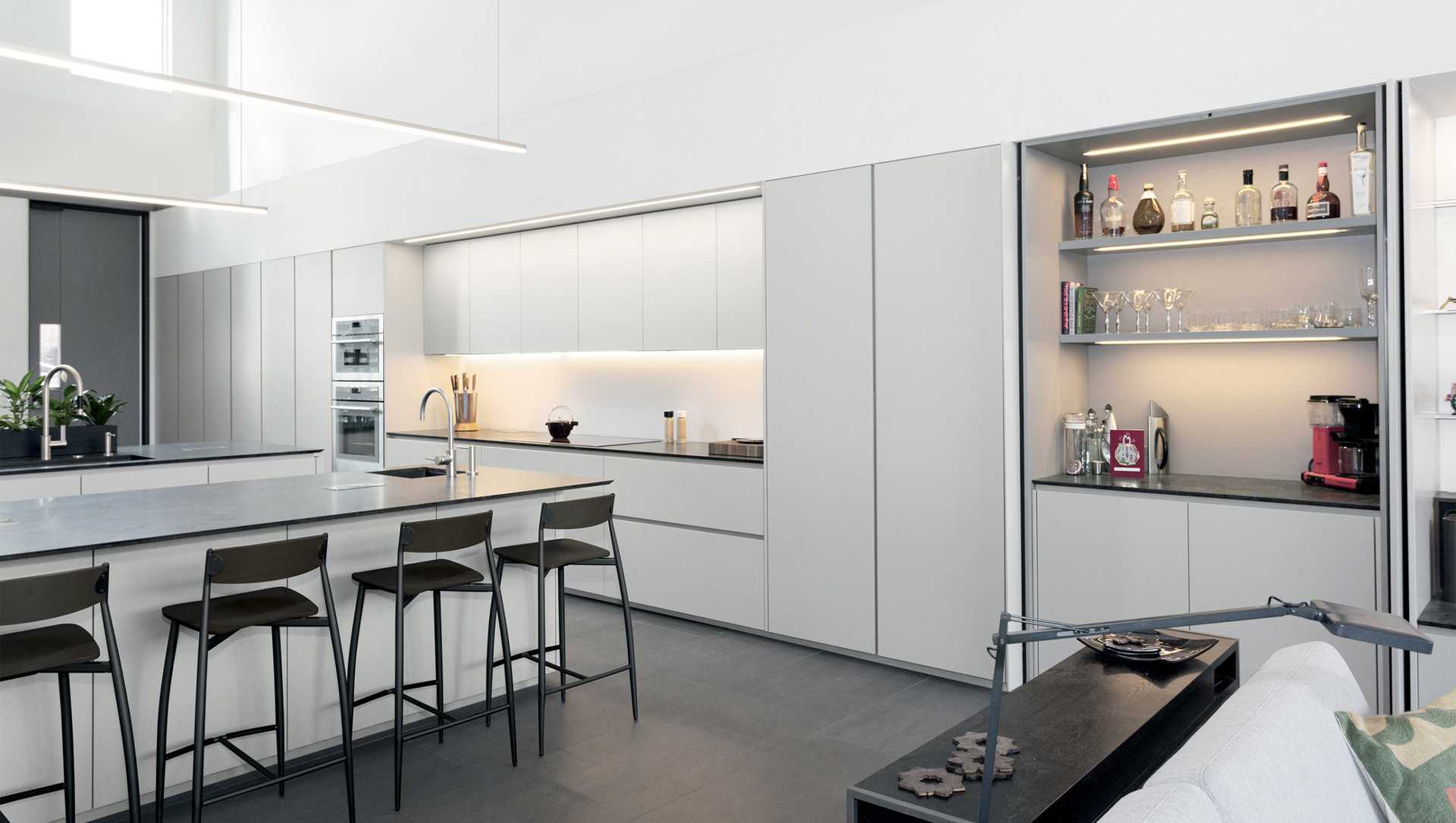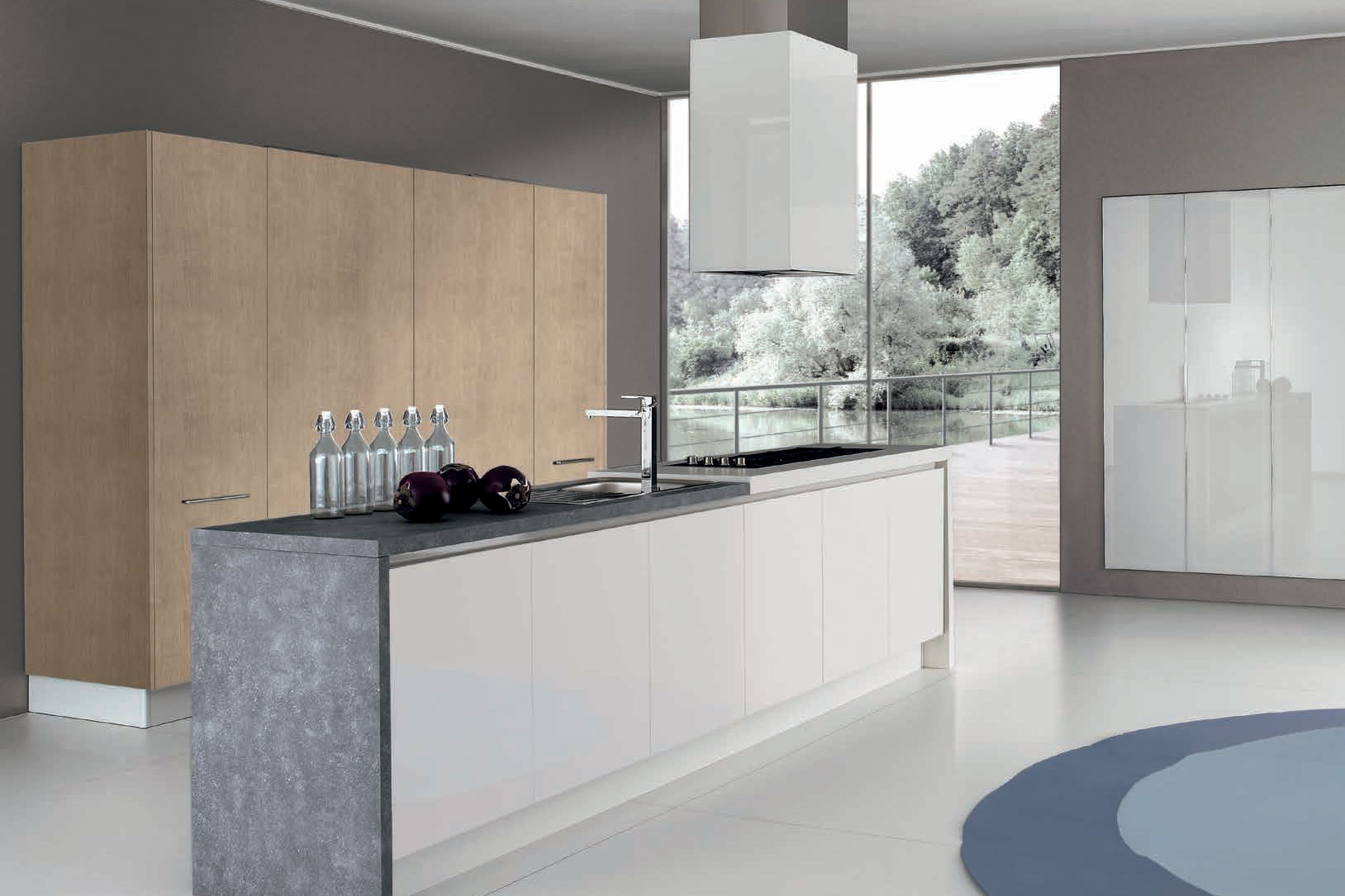Top European Kitchen Cabinet Brands

European kitchen cabinet brands are renowned for their craftsmanship, attention to detail, and use of high-quality materials. These brands cater to a wide range of design preferences, from contemporary to traditional, offering a variety of styles and finishes to suit any taste and budget.
Overview of Top European Kitchen Cabinet Brands
The following list presents ten of the most popular European kitchen cabinet brands, highlighting their history, design philosophy, target market, and key features:
- Poggenpohl: Founded in 1892, Poggenpohl is one of the oldest and most prestigious kitchen cabinet brands in the world. Known for its innovative designs and use of high-end materials, Poggenpohl caters to a discerning clientele who value quality and exclusivity. The brand’s design philosophy emphasizes functionality, ergonomics, and timeless elegance. Poggenpohl offers a wide range of styles, from contemporary to traditional, with a focus on clean lines, minimalist aesthetics, and high-quality finishes.
- Bulthaup: Founded in 1949, Bulthaup is a German kitchen cabinet brand that is known for its minimalist designs and use of high-quality materials. The brand’s design philosophy is based on the principle of “less is more,” with a focus on functionality and simplicity. Bulthaup’s kitchens are often characterized by their clean lines, open layouts, and use of natural materials like wood, stone, and metal. The brand’s target market includes discerning homeowners who appreciate quality, craftsmanship, and timeless design.
- SieMatic: Founded in 1929, SieMatic is another German kitchen cabinet brand that is known for its innovative designs and use of high-quality materials. The brand offers a wide range of styles, from contemporary to traditional, with a focus on functionality and aesthetics. SieMatic’s kitchens are often characterized by their clean lines, open layouts, and use of natural materials like wood, stone, and metal. The brand’s target market includes homeowners who appreciate quality, craftsmanship, and timeless design.
- Schüller: Founded in 1960, Schüller is a German kitchen cabinet brand that is known for its wide range of styles and finishes. The brand offers a variety of designs to suit different tastes and budgets, from contemporary to traditional. Schüller’s kitchens are often characterized by their use of high-quality materials, innovative features, and functional layouts. The brand’s target market includes homeowners who are looking for a balance of style, functionality, and value.
- Häcker: Founded in 1968, Häcker is a German kitchen cabinet brand that is known for its high-quality craftsmanship and affordable prices. The brand offers a wide range of styles and finishes, from contemporary to traditional, with a focus on functionality and value. Häcker’s kitchens are often characterized by their use of high-quality materials, innovative features, and functional layouts. The brand’s target market includes homeowners who are looking for a balance of style, functionality, and value.
- Nobilia: Founded in 1968, Nobilia is a German kitchen cabinet brand that is known for its high-quality craftsmanship and affordable prices. The brand offers a wide range of styles and finishes, from contemporary to traditional, with a focus on functionality and value. Nobilia’s kitchens are often characterized by their use of high-quality materials, innovative features, and functional layouts. The brand’s target market includes homeowners who are looking for a balance of style, functionality, and value.
- Rational: Founded in 1961, Rational is a German kitchen cabinet brand that is known for its high-quality craftsmanship and innovative designs. The brand offers a wide range of styles and finishes, from contemporary to traditional, with a focus on functionality and aesthetics. Rational’s kitchens are often characterized by their use of high-quality materials, innovative features, and functional layouts. The brand’s target market includes homeowners who appreciate quality, craftsmanship, and timeless design.
- Alno: Founded in 1927, Alno is a German kitchen cabinet brand that is known for its high-quality craftsmanship and innovative designs. The brand offers a wide range of styles and finishes, from contemporary to traditional, with a focus on functionality and aesthetics. Alno’s kitchens are often characterized by their use of high-quality materials, innovative features, and functional layouts. The brand’s target market includes homeowners who appreciate quality, craftsmanship, and timeless design.
- Leicht: Founded in 1959, Leicht is a German kitchen cabinet brand that is known for its high-quality craftsmanship and innovative designs. The brand offers a wide range of styles and finishes, from contemporary to traditional, with a focus on functionality and aesthetics. Leicht’s kitchens are often characterized by their use of high-quality materials, innovative features, and functional layouts. The brand’s target market includes homeowners who appreciate quality, craftsmanship, and timeless design.
- FM Küche: Founded in 1968, FM Küche is a German kitchen cabinet brand that is known for its high-quality craftsmanship and innovative designs. The brand offers a wide range of styles and finishes, from contemporary to traditional, with a focus on functionality and aesthetics. FM Küche’s kitchens are often characterized by their use of high-quality materials, innovative features, and functional layouts. The brand’s target market includes homeowners who appreciate quality, craftsmanship, and timeless design.
Design Styles
European kitchen cabinet brands offer a diverse range of design styles to suit different tastes and preferences. These styles can be broadly categorized as contemporary, traditional, and transitional:
- Contemporary: Contemporary kitchen cabinets are characterized by clean lines, minimalist aesthetics, and a focus on functionality. They often feature sleek, modern designs with a focus on open layouts and integrated appliances. Examples of contemporary kitchen cabinet brands include Poggenpohl, Bulthaup, and SieMatic.
- Traditional: Traditional kitchen cabinets are characterized by ornate details, classic designs, and a focus on craftsmanship. They often feature intricate carvings, decorative hardware, and warm, natural finishes. Examples of traditional kitchen cabinet brands include Schüller, Häcker, and Nobilia.
- Transitional: Transitional kitchen cabinets combine elements of both contemporary and traditional styles. They offer a balance of modern and classic features, creating a timeless and sophisticated look. Examples of transitional kitchen cabinet brands include Rational, Alno, and Leicht.
Materials
European kitchen cabinet brands use a wide variety of materials to create their products, each with its own unique properties and aesthetic appeal. These materials include:
- Wood: Wood is a popular material for kitchen cabinets, offering a natural beauty, durability, and warmth. Common wood types used by European kitchen cabinet brands include oak, cherry, maple, walnut, and beech.
- Finishes: Finishes play a crucial role in determining the overall look and feel of kitchen cabinets. European kitchen cabinet brands offer a wide range of finishes, including painted, stained, lacquered, and veneered options.
- Hardware: Hardware, such as handles, knobs, and hinges, can add a finishing touch to kitchen cabinets. European kitchen cabinet brands offer a wide range of hardware options, from sleek and modern to ornate and traditional.
Examples of Kitchen Cabinet Designs
Here are some examples of kitchen cabinet designs from different European brands:
- Poggenpohl: A Poggenpohl kitchen might feature a sleek, minimalist design with integrated appliances, open shelving, and a focus on functionality. The cabinets might be made of high-quality materials like lacquered wood or stainless steel, with a minimalist hardware design.
- Bulthaup: A Bulthaup kitchen might feature a minimalist design with a focus on clean lines and open layouts. The cabinets might be made of natural materials like wood, stone, or metal, with a focus on functionality and simplicity.
- SieMatic: A SieMatic kitchen might feature a contemporary design with a focus on functionality and aesthetics. The cabinets might be made of high-quality materials like lacquered wood or stainless steel, with a focus on clean lines and open layouts.
- Schüller: A Schüller kitchen might feature a traditional design with a focus on craftsmanship and ornate details. The cabinets might be made of wood with a warm, natural finish, and feature intricate carvings and decorative hardware.
- Häcker: A Häcker kitchen might feature a transitional design with a balance of modern and classic features. The cabinets might be made of wood with a painted or stained finish, and feature a mix of contemporary and traditional hardware.
Key Features and Considerations

European kitchen cabinets have gained immense popularity worldwide for their elegant designs, meticulous craftsmanship, and functional features. These cabinets stand out from other styles with their unique characteristics, offering both advantages and disadvantages. Understanding these aspects is crucial for making an informed decision when choosing European kitchen cabinets for your home.
Key Features Distinguishing European Kitchen Cabinets
European kitchen cabinets are characterized by their focus on quality materials, precise construction, and attention to detail.
- High-Quality Materials: European cabinet makers often use premium materials like solid wood, engineered wood, and high-quality laminates. These materials ensure durability, longevity, and a sophisticated aesthetic.
- Detailed Craftsmanship: European cabinet makers prioritize meticulous craftsmanship, employing skilled artisans to create cabinets with precise joinery, intricate details, and smooth finishes.
- Functional Design: European kitchen cabinets are known for their functional design, incorporating features like soft-close drawers, adjustable shelves, and integrated lighting.
- Customization: European kitchen cabinet manufacturers offer a wide range of customization options, allowing homeowners to tailor their cabinets to their specific needs and preferences.
Advantages of Choosing European Kitchen Cabinets
- Longevity and Durability: European kitchen cabinets are built to last, using high-quality materials and meticulous craftsmanship. They can withstand the rigors of daily use and maintain their beauty for years to come.
- Aesthetic Appeal: European kitchen cabinets are renowned for their elegant and sophisticated designs. They can enhance the overall aesthetic of your kitchen, creating a timeless and refined look.
- Functionality and Organization: European cabinets often incorporate features like soft-close drawers, adjustable shelves, and integrated lighting, enhancing the functionality and organization of your kitchen.
- Customization Options: European kitchen cabinet manufacturers offer a wide range of customization options, allowing you to create a kitchen that perfectly meets your specific needs and preferences.
Disadvantages of Choosing European Kitchen Cabinets
- Higher Cost: European kitchen cabinets are typically more expensive than other cabinet styles due to the use of high-quality materials, meticulous craftsmanship, and customization options.
- Longer Lead Times: European kitchen cabinets often have longer lead times due to the intricate manufacturing process and customization options.
- Limited Availability: European kitchen cabinet brands may not be as widely available as other cabinet styles, especially in certain regions.
Factors to Consider When Selecting a European Kitchen Cabinet Brand
Choosing the right European kitchen cabinet brand is crucial for ensuring a successful kitchen renovation. Consider these factors:
- Budget: European kitchen cabinets are generally more expensive than other cabinet styles. Determine your budget before you start shopping to narrow down your options.
- Style: European kitchen cabinets come in a variety of styles, from traditional to modern. Consider the overall style of your home and kitchen when selecting a brand.
- Functionality: Think about your specific needs and preferences. Do you need extra storage space? Do you want soft-close drawers? Do you prefer integrated lighting?
- Reputation and Experience: Choose a brand with a proven track record of quality, craftsmanship, and customer satisfaction.
- Warranty: Check the warranty offered by the manufacturer. A comprehensive warranty can provide peace of mind and protect your investment.
Pricing Comparison of European Kitchen Cabinet Brands
| Brand | Average Price Per Linear Foot | Poggenpohl | $600 – $1,200 | Bulthaup | $700 – $1,500 | SieMatic | $500 – $1,000 | Leicht | $450 – $900 | Scavolini | $350 – $700 | Smallbone | $550 – $1,100 | <h3>Pros and Cons of Popular European Kitchen Cabinet Brands</h3> | Brand | Pros | Cons | Poggenpohl | Renowned for its innovative designs and high-quality craftsmanship. Offers a wide range of customization options. | Can be very expensive. May have longer lead times. | Bulthaup | Known for its minimalist and functional designs. Uses high-quality materials and craftsmanship. | Can be very expensive. May have limited availability. | SieMatic | Offers a wide range of styles and finishes. Known for its high-quality construction. | Can be expensive. May have longer lead times. | Leicht | Known for its modern and innovative designs. Offers a wide range of customization options. | Can be expensive. May have longer lead times. | Scavolini | Offers a wide range of styles and finishes at more affordable prices. | May not be as high-quality as other European brands. | Smallbone | Known for its traditional and handcrafted designs. Uses high-quality materials and craftsmanship. | Can be very expensive. May have longer lead times. |
|---|
Trends and Innovations in European Kitchen Cabinets

The European kitchen cabinet industry is a dynamic space, constantly evolving to meet changing consumer demands and technological advancements. This dynamism is reflected in the innovative designs, smart features, and sustainable practices that characterize modern European kitchen cabinets.
The Influence of Technology on European Kitchen Cabinets
Technological advancements are profoundly impacting European kitchen cabinet design, leading to the integration of smart features and the use of innovative materials.
- Smart Features: European kitchen cabinet manufacturers are incorporating smart features into their designs, enhancing functionality and convenience. For instance, some cabinets feature integrated lighting systems that automatically illuminate the interior when the door is opened, eliminating the need for separate lighting fixtures. Others include built-in charging stations for electronic devices, providing a convenient way to power up smartphones, tablets, or other gadgets while they are stored within the cabinet. These features contribute to a more user-friendly and efficient kitchen experience.
- Innovative Materials: Technological advancements in material science are driving innovation in European kitchen cabinet design. For example, manufacturers are increasingly using high-performance laminates and engineered wood products that offer exceptional durability, moisture resistance, and scratch resistance. These materials are also environmentally friendly, as they often utilize recycled materials and sustainable manufacturing processes. Additionally, the use of advanced coatings and finishes allows for a wide range of aesthetic options, from sleek and modern to rustic and traditional. This variety caters to diverse design preferences and enhances the overall appeal of the kitchen space.
Sustainability Practices in European Kitchen Cabinet Brands
Sustainability is a key consideration for many European kitchen cabinet brands. They are committed to using environmentally friendly materials and manufacturing processes.
- Sustainable Materials: Many European brands prioritize the use of sustainable materials, such as certified wood from responsibly managed forests, recycled materials, and low-emission finishes. This commitment to sustainability reduces the environmental impact of their products and aligns with the growing consumer demand for eco-conscious choices.
- Energy-Efficient Manufacturing: European kitchen cabinet manufacturers are implementing energy-efficient manufacturing practices, reducing their carbon footprint and minimizing waste. This includes optimizing production processes, utilizing renewable energy sources, and implementing recycling programs. By adopting these practices, they contribute to a more sustainable future for the industry.
Emerging Trends in European Kitchen Cabinet Design
The future of European kitchen cabinet design is characterized by a focus on personalization, functionality, and sustainability.
- Personalized Design: European kitchen cabinet brands are increasingly offering personalized design options, allowing customers to customize their cabinets to suit their individual needs and preferences. This trend is driven by the desire for unique and bespoke kitchen spaces that reflect the homeowner’s style and lifestyle.
- Multifunctional Designs: European kitchen cabinet manufacturers are incorporating multifunctional designs that maximize space utilization and cater to the changing needs of modern kitchens. This includes incorporating features like integrated appliances, pull-out pantry systems, and hidden storage solutions that optimize space efficiency and functionality.
- Smart Kitchen Technology: The integration of smart kitchen technology is expected to continue, with features like voice-activated controls, automated storage systems, and connected appliances becoming increasingly common. These innovations will enhance kitchen functionality, convenience, and efficiency.
Examples of Innovative Kitchen Cabinet Designs
Several European brands are pushing the boundaries of kitchen cabinet design with innovative concepts.
- Poggenpohl’s “P’7370” kitchen: This innovative kitchen features a minimalist design with sleek lines and integrated appliances. The use of high-quality materials and sophisticated craftsmanship creates a luxurious and functional space.
The “P’7370” kitchen showcases Poggenpohl’s commitment to contemporary design and exceptional craftsmanship.
- Bulthaup’s “b3” kitchen: This kitchen emphasizes flexibility and customization, allowing homeowners to create a space that perfectly meets their individual needs. The modular design allows for a variety of configurations, while the use of high-quality materials ensures durability and longevity.
The “b3” kitchen reflects Bulthaup’s dedication to creating personalized and functional kitchen environments.
- SieMatic’s “Urban” kitchen: This kitchen embraces a modern and urban aesthetic, featuring sleek lines, open shelving, and a focus on functionality. The use of innovative materials and smart features creates a contemporary and efficient kitchen space.
The “Urban” kitchen exemplifies SieMatic’s ability to blend style and functionality in a modern kitchen setting.
European kitchen cabinet brands are renowned for their craftsmanship and design, often offering a wide array of styles and finishes. But what if you’re looking to inject a touch of European flair into your IKEA kitchen? Consider exploring the world of kitchen doors to fit IKEA cabinets , which can transform the look and feel of your space without requiring a complete overhaul.
This approach allows you to enjoy the practicality of IKEA’s affordable cabinets while adding a touch of European elegance with custom-designed doors.
European kitchen cabinet brands often boast sleek designs and high-quality materials, but sometimes, a pop of personality is needed. For a truly unique look, consider pairing your cabinets with a vibrant color from kelly moore paint for kitchen cabinets.
This brand offers a wide range of colors, from classic neutrals to bold statement shades, allowing you to create a kitchen that truly reflects your style, even with European cabinets.
